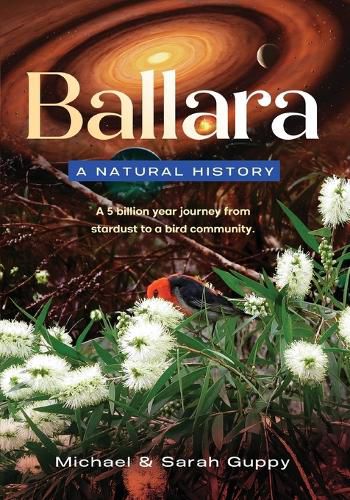Readings Newsletter
Become a Readings Member to make your shopping experience even easier.
Sign in or sign up for free!
You’re not far away from qualifying for FREE standard shipping within Australia
You’ve qualified for FREE standard shipping within Australia
The cart is loading…






This title is printed to order. This book may have been self-published. If so, we cannot guarantee the quality of the content. In the main most books will have gone through the editing process however some may not. We therefore suggest that you be aware of this before ordering this book. If in doubt check either the author or publisher’s details as we are unable to accept any returns unless they are faulty. Please contact us if you have any questions.
The authors (Michael and Sarah) live on a property (called Ballara) in south-east Australia, that includes a 10ha bird study site, which is the subject of the book. The property was purchased by Sarah's father Stephen in 1973 (Chapter 1). Stephen did a 10-year study of the bird community on the 10ha site between 1975 and 1984, and left the property in 1998 (Chapter 5). Upon Michael's retirement in 2004, he and Sarah moved to the property and continued the study for another nine years (Chapter 6).
The book uses as its focus, both Stephen and the 10ha plot of land, which are threads that provides continuity throughout the book. As the story proceeds, it addresses in six chapters, five sub-stories which are linked to the history of the plot; Stephen (an eminent Australian ornithologist, Chapter 1), the geology, vegetation, soils and birds of the 10ha site (Chapter 2), aboriginal (Chapter 3) and white settler (Chapter 4) impacts on the site, and the scientific studies on the site (Chapters 5 and 6)). The book is interesting from an Australian historical perspective, but also offers an insight into the complex and onerous nature of ecological studies. There are many books and TV series on the results of scientific studies, but very little on how these studies are done. The book also presents the results of these studies, written for the lay person, and discusses these results in the context of today's major issues such as climate change, extinctions and habitat destruction.
All proceeds from the sale of this book will be donated to support the Long Term Ecology Group at The Australian National University. The Group conducts cutting-edge research to protect Australia's native forests and wildlife, focusing on understanding the impacts of logging and other disturbances, monitoring the recovery of forest ecosystems, and identifying science-based solutions for conservation. By purchasing this book, you are helping to fund vital research that contributes to the preservation of Australia's unique biodiversity for future generations.
$9.00 standard shipping within Australia
FREE standard shipping within Australia for orders over $100.00
Express & International shipping calculated at checkout
This title is printed to order. This book may have been self-published. If so, we cannot guarantee the quality of the content. In the main most books will have gone through the editing process however some may not. We therefore suggest that you be aware of this before ordering this book. If in doubt check either the author or publisher’s details as we are unable to accept any returns unless they are faulty. Please contact us if you have any questions.
The authors (Michael and Sarah) live on a property (called Ballara) in south-east Australia, that includes a 10ha bird study site, which is the subject of the book. The property was purchased by Sarah's father Stephen in 1973 (Chapter 1). Stephen did a 10-year study of the bird community on the 10ha site between 1975 and 1984, and left the property in 1998 (Chapter 5). Upon Michael's retirement in 2004, he and Sarah moved to the property and continued the study for another nine years (Chapter 6).
The book uses as its focus, both Stephen and the 10ha plot of land, which are threads that provides continuity throughout the book. As the story proceeds, it addresses in six chapters, five sub-stories which are linked to the history of the plot; Stephen (an eminent Australian ornithologist, Chapter 1), the geology, vegetation, soils and birds of the 10ha site (Chapter 2), aboriginal (Chapter 3) and white settler (Chapter 4) impacts on the site, and the scientific studies on the site (Chapters 5 and 6)). The book is interesting from an Australian historical perspective, but also offers an insight into the complex and onerous nature of ecological studies. There are many books and TV series on the results of scientific studies, but very little on how these studies are done. The book also presents the results of these studies, written for the lay person, and discusses these results in the context of today's major issues such as climate change, extinctions and habitat destruction.
All proceeds from the sale of this book will be donated to support the Long Term Ecology Group at The Australian National University. The Group conducts cutting-edge research to protect Australia's native forests and wildlife, focusing on understanding the impacts of logging and other disturbances, monitoring the recovery of forest ecosystems, and identifying science-based solutions for conservation. By purchasing this book, you are helping to fund vital research that contributes to the preservation of Australia's unique biodiversity for future generations.